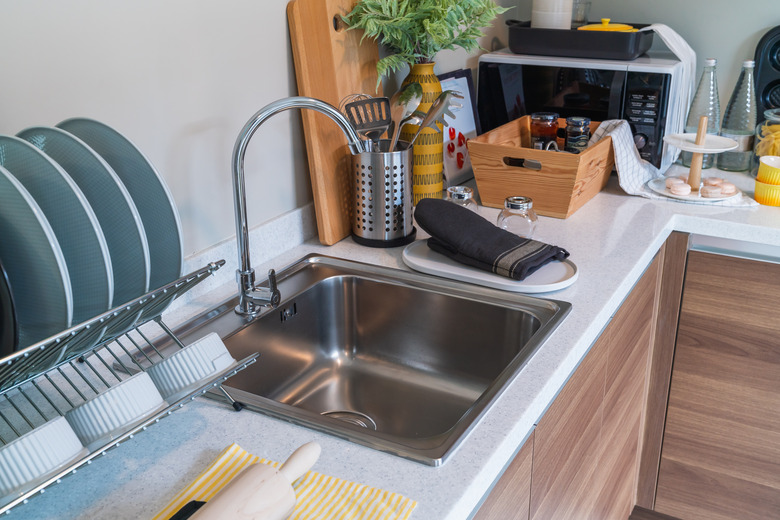What Are The Small Black Particles Clogging My Water Faucet?
Any time you notice black flecks in the water, it's a cause for concern, but small black particles mixed with organic matter can be particularly worrisome. If you're on a well, they could be a sign that the water level in the well is unusually low. If you do a lot of gardening, they could be bits of dirt being sucked back into the water system by negative pressure. Both of these scenarios are problematic, but they're unusual and there's a more likely explanation.
The small black particles clogging your water faucet are likely bits of rust. If you have galvanized water pipes, they're almost certainly the source of the rust, but it could also be coming from the water heater or an old, corroded valve or faucet. Rust won't kill you, but it isn't pleasant either, and the fact that it's clogging your faucet adds to the motivation to do something about it.
Galvanized Plumbing Causes Black Flecks in the Water
Up until the middle of the 20th century, it was common to install galvanized steel plumbing pipes. Many houses that were built during that time still have galvanized pipes. One of the main reasons plumbers don't use them anymore is the fact that they corrode. As rust grows inside the pipes, the passageways become restricted and water flow is affected.
If your house has galvanized pipes, it's an older house, and it's probably just a matter of time before you start to notice black bits in the water from the tap. In addition, you might be having water flow problems at one or more faucets. Both of these conditions are warnings that the pipes are past their service life and need to be replaced or they might start leaking.
If you see black specks in the hot water only, the water heater is probably contributing most of the rust, whether or not you have galvanized pipes. When the water heater liner corrodes, which isn't unusual if it's old enough, most of the rust settles at the bottom of the tank, but some swirls around and exits through the hot water outlet. The situation will worsen if you don't flush the tank and the water will turn brownish yellow.
Garden Soil or an Overdrawn Well Causes Black Sediment in the Water
When you think of black flakes in the water, you think of metal, but when you think of tiny particles, you think of dirt. This type of sediment is composed of tiny stones and partially dissolved organic matter, and it may also be discoloring the water. It could be coming from your garden or the well.
When you leave a hose lying on the ground and negative pressure develops in the water system, the suction may draw dirt and other contaminants through the hose into the water system. It's a long shot, but it's a real enough possibility for many plumbing authorities to require vacuum breakers on hose bibs. If you're seeing black sediment in the water, try installing vacuum breakers on all outdoor faucets and see if it makes a difference.
If you have a well, sediment in the water can often be traced back to it. Sediment can be a sign that the well is overdrawn and needs more time to recover, and if that's true, you should lower your water usage for a while.
How to Clear the Faucet
In most cases, you don't have to worry much about black sediment or black flecks in the water causing any permanent blockages in the faucet. Simply remove and backflush the aerator whenever the water flow goes down. You should also remove and flush the valves yearly or whenever water flow doesn't improve when you take off the aerator.
